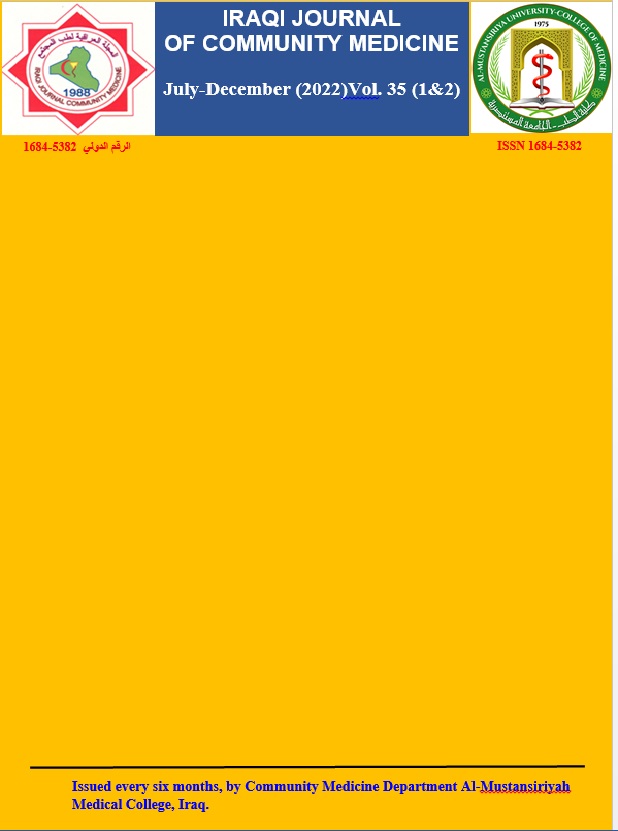Abstract
Background: Chronic myeloid leukemia (CML) is a stem cell disorder results from chromosomal abnormality, Philadelphia chromosome (Ph), which arises from the reciprocal translocation of part of long arm of chromosome 9, in which protooncogene ABL gene (ablson) is located, to long arm of chromosome 22, in which BCR gene (break point cluster region) is located forming BCR-ABL fusion gene, a molecular marker of CML. The BCR-ABL gene can be detected using several molecular methods, including southern blotting, fluorescence in situ hybridization (FISH) and Reverse Transcreptase-Polymerase Chain Reaction (RT-PCR). For its simplicity, rapidity, and sensitivity, RT-PCR is one of the most common techniques used for analyzing whether a target gene is being expressed or not.
Objective: This study was designed as a try to apply molecular techniques as conformational diagnosis of BCR-ABL gene and its variants in CML patients.
Patients & Methods: Venous blood sample from 34 CML patients, 12 ALL patients, 1 AML patients, 1 CMML patient and 2 healthy individuals were collected. RNA was extracted from these samples using specific kit for this purpose. Molecular screening for the presence of bcr-abl in those samples was done using Multiplex-Single Step-Reverse Transcriptase-Polymerase Chain Reaction (M-SS-RT-PCR). Amplified products were electrophoresid in 1.5% agarose gel.
Results: The results showed that all CML patients were positive for bcr-abl while all the others were negative for this gene. Conclusion: qualitative molecular diagnosis of bcr-abl using M-SS-RT-PCR considered as Conformational diagnosis for CML patients before starting treatment.
Objective: This study was designed as a try to apply molecular techniques as conformational diagnosis of BCR-ABL gene and its variants in CML patients.
Patients & Methods: Venous blood sample from 34 CML patients, 12 ALL patients, 1 AML patients, 1 CMML patient and 2 healthy individuals were collected. RNA was extracted from these samples using specific kit for this purpose. Molecular screening for the presence of bcr-abl in those samples was done using Multiplex-Single Step-Reverse Transcriptase-Polymerase Chain Reaction (M-SS-RT-PCR). Amplified products were electrophoresid in 1.5% agarose gel.
Results: The results showed that all CML patients were positive for bcr-abl while all the others were negative for this gene. Conclusion: qualitative molecular diagnosis of bcr-abl using M-SS-RT-PCR considered as Conformational diagnosis for CML patients before starting treatment.
